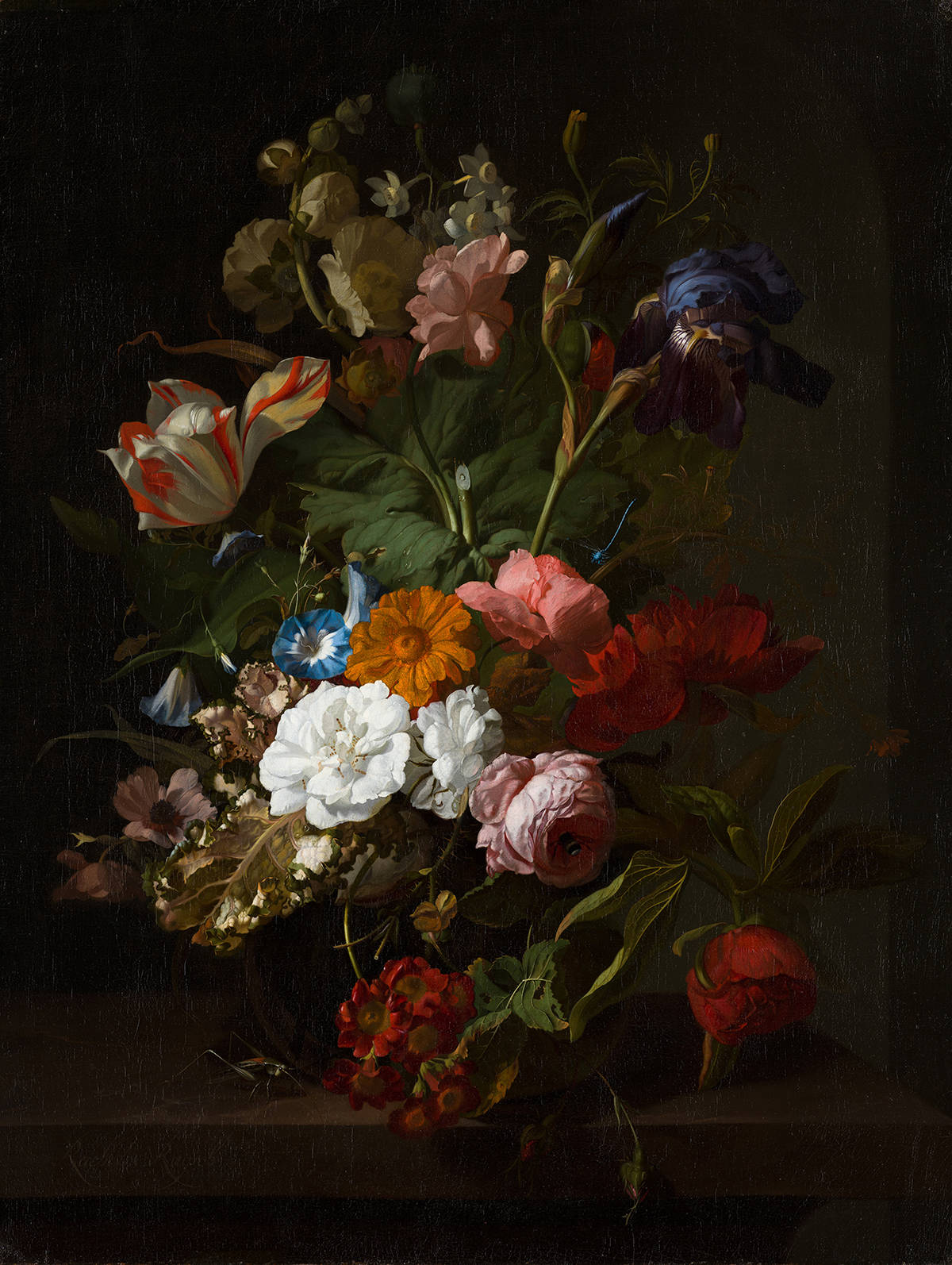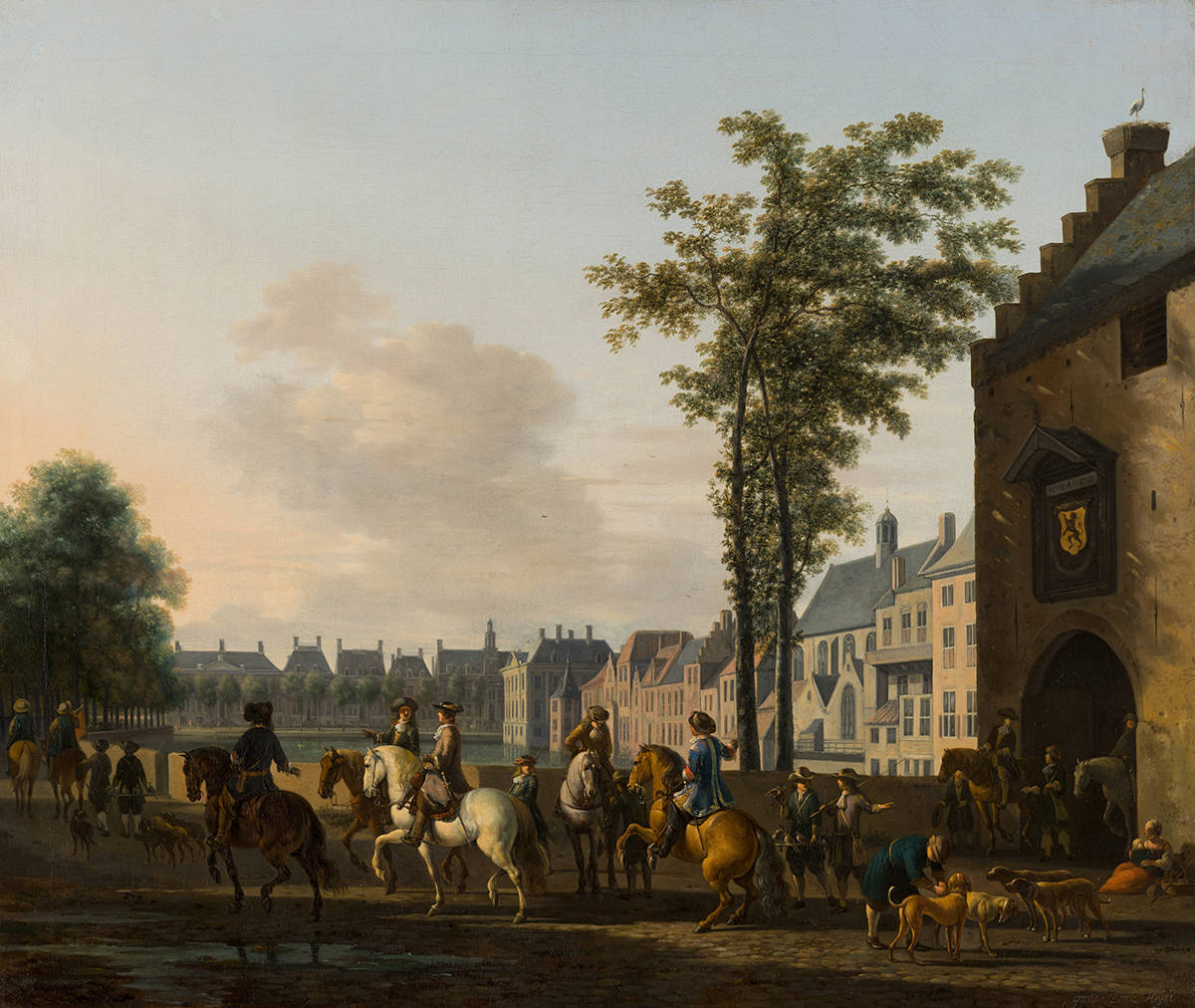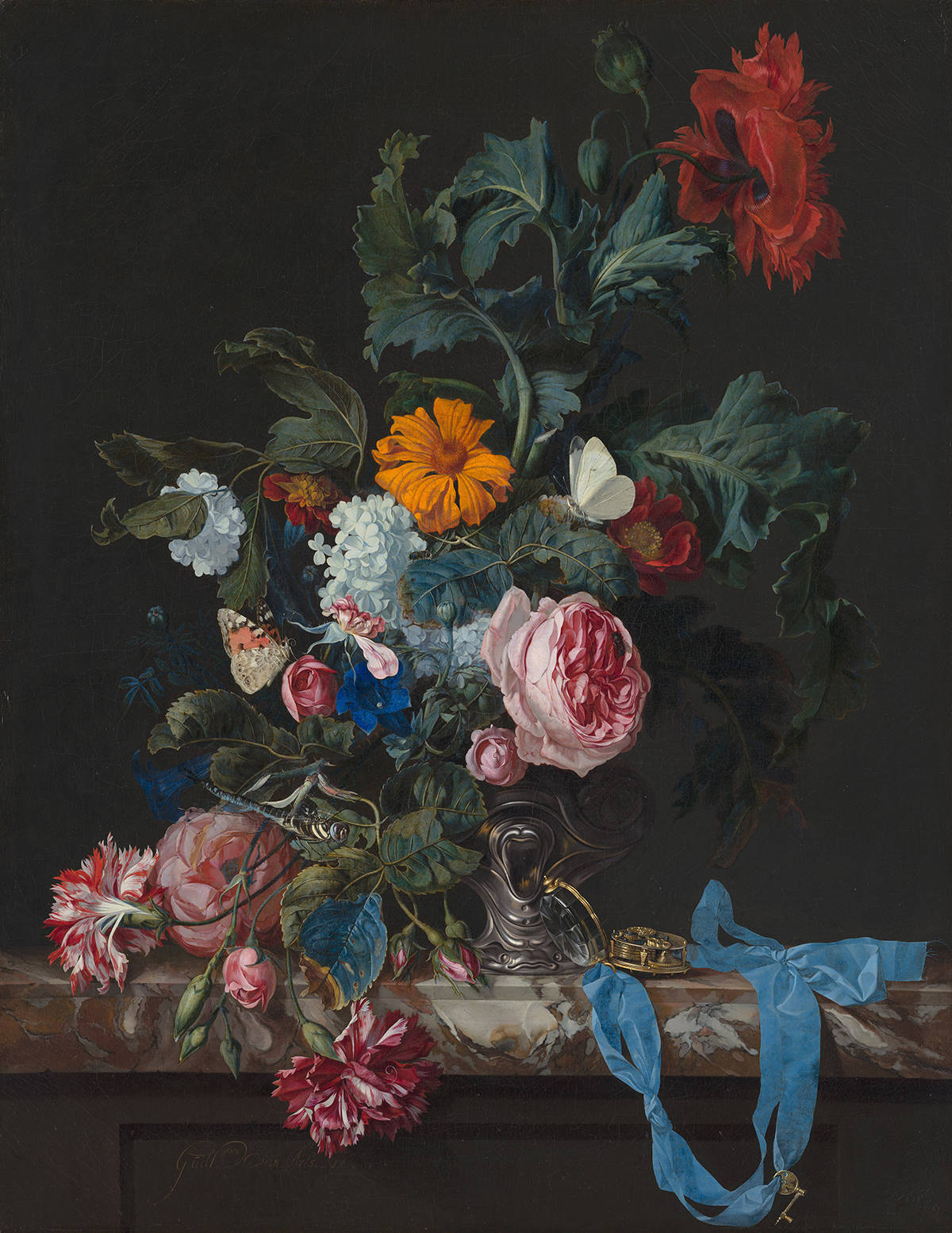Rachel Ruysch (1664-1750)
Famous both at home and abroad

Rachel Ruysch was one of the most successful Dutch still life painters of the 17th and 18th centuries. Her refined paintings with colourful, lifelike flowers were among the best of the kind at the time. Ruysch was a court painter for a German prince and the first woman to be a member of the artists’ society Pictura in The Hague. She was famous both at home and abroad.
Life in The Hague and Amsterdam
Ruysch was born in The Hague, but grew up in Amsterdam. She was the oldest daughter of Frederik Ruysch (1638-1731), a famous professor of anatomy and botany. She learned to paint from Willem van Aelst (1627-1683). At that time, he was the best still life painter in Amsterdam. When Ruysch was almost thirty she married the painter Jurriaan Pool (1666-1745). They had ten children, but most of them died young. Ruysch continued to paint until she was very old. At the end of her life, a collection of poems about her paintings was published. This was very unusual. No other Dutch artist had ever had this honour.

Promising start
Ruysch grew up in a family where she had more opportunities than most other women at that time. Her father Frederik Ruysch had developed a new way of preserving body parts. This meant that the human body could be studied more closely than ever. Frederik had a large collection of curiosities (unusual objects), including stuffed animals, dried plants and preserved body parts. He also made fantasy landscapes using preserved human organs and babies’ skeletons. His collection was popular with tourists and many important guests came to see it. Frederik was also an amateur painter, and he made scientific drawings of his collection.
Rachel also drew and painted her father’s collection. Her drawings were so good that at the age of fifteen she was given permission to train as an artist. This was not unique, but it was unusual for a girl. Almost all women who became professional painters in the 17th and 18th centuries came from a family of artists, like Ruysch. She was also very lucky that she could paint her father’s collection of curiosities. This, plus her great talent for painting, made it much easier for Ruysch to reach the top of the art profession.
Lifelike
Ruysch worked with great care and tried to paint everything as naturally as possible. Guided by her teacher Van Aelst, she started painting ‘forest floors’: pictures of snakes, snails, toads and insects among plants and bushes. She painted insects, blades of grass and small flowers using a very fine brush. Ruysch also used real moss, dipped in paint, to give the texture of the forest floor.

Fictional compositions
Ruysch’s paintings show flowers, plants and animals that would never be seen together in the real world. That is because she used living and preserved models. In her flower paintings she combined flowers that came out in different seasons. She found rare plants from faraway countries at the Hortus Botanicus botanical gardens, where her father taught botany. Her father’s collection also included rare plants. He had a way of preserving them that made them look like they were flowering forever.

Work and motherhood
Ruysch was very unusual for a woman in her day. She carried on her successful career even after she became a wife and mother of ten children. Female painters, no matter how talented or successful they were, normally stopped painting when they married. The few who continued painting did not usually work much. At that time, people thought a married woman had other responsibilities.
Although there were more female artists working then than we often think, there were very few compared to male artists. They were regarded with admiration, and also with suspicion, and sometimes they were called ‘men in a woman’s body’. People thought that artistic talent was something only men could have.
Rich clients
Ruysch sold her paintings to rich collectors and European royalty for very high prices. She only needed to sell a few paintings a year. From 1708 to 1716 Ruysch worked for Johan Wilhelm, Elector Palatine – a German prince – who lived in Düsseldorf. She had a large family by then, and the prince did not make her move to Düsseldorf. He allowed her to live in Amsterdam, if she provided one painting a year. He paid her very well, so she never had any money problems. And when she won 75,000 guilders in a lottery at the age of 59, she became a rich woman herself.


